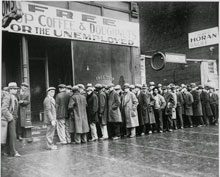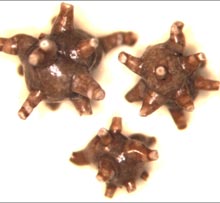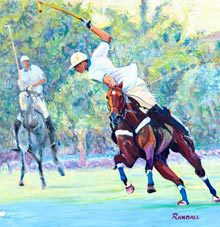 “… Poor little old human beings—they’re jerked into this world without having any idea where they came from or what it is they are supposed to do, or how long they have to do it in. Or where they are gonna wind up after that. But bless their hearts, most of them wake up every morning and keep on trying to make some sense out of it. Why, you can’t help but love them, can you? I just wonder why more of them aren’t as crazy as betsy bugs.” – Fannie Flagg, “Welcome To The World, Baby Girl!” (NY: Random House, 1998)
“… Poor little old human beings—they’re jerked into this world without having any idea where they came from or what it is they are supposed to do, or how long they have to do it in. Or where they are gonna wind up after that. But bless their hearts, most of them wake up every morning and keep on trying to make some sense out of it. Why, you can’t help but love them, can you? I just wonder why more of them aren’t as crazy as betsy bugs.” – Fannie Flagg, “Welcome To The World, Baby Girl!” (NY: Random House, 1998)
We’re seeing lots of feisty crowds in the news lately. People of all different shapes, shades and shill-worthiness. Many look much less friendly than others, to the point where some of those crowds seem like good places to get jostled around, insulted or even trampled—ideologically if not in fact. Many crowds are mixed bags unto themselves. Friendly faces, menacing faces, and fifty-one shades in between.
Filmmaker Ken Burns did his usual masterful job recently with the release of a seminal biography, “Jackie Robinson.” His subject, an extraordinary college athlete, pro baseball pioneer and civil rights leader, was frequently wreathed in crowds. When he broke in with the Brooklyn Dodgers in 1947, America faced a racial crossroads. Ready at last—maybe–to begin the painful process of integrating its national pastime, baseball, long before football supplanted it. Look into the faces in those crowds shortly after the war with the benefit of nearly 70 years of hindsight and consider what might have enveloped gladiators in the Roman Coliseum. One can imagine the hurricane of humans’ roiling furies and passion for life and death competition. Perhaps there were also a few guys drinking beer, laughing, waving their programs and gladiator pennants (or peanuts). Hard to be sure this far removed.
Burns’ crowd images from Ebbets Field are gripping and include engrossed African Americans cheering on their grander than life hero. America had come a long way in the few years since the Depression when crowds roared for FDR but also stood impassively in soup lines. When unemployment reached a soul crushing 25%.
One of these more sobering images crossed my in-box recently with a startling (to me, at least) note that gangster Al Capone was the benefactor. The faces in the crowd were struggling fathers, husbands, brothers at the time. Today we’re inclined to call them faceless. But were they ever that? Are they truly faceless now? Probably not to the millions of Americans who even today are frustrated with their perhaps permanent loss of high paying manufacturing jobs and their extended loss of dignity. One might also note that several of the most enduring photographic Depression era images depict despondent mothers and their pitiful, ragamuffin children. Their suffering and anonymity helped make them famous, but what about their endless contemporaries? What about the rest of us who may never have found ourselves in front of a camera, wielded with an artist’s eye for human distress?
For most of us today, the luxury of anonymity—the photographic kind, at least—is rapidly receding in society’s dusty rear view mirror. “Selfies” have rendered all of us as potential overnight celebrities, and social media provide the engines for spreading human images around the globe in seconds. Faces in the crowd can become magazine covers or front page news in an instant. For those of us betsy bugs who love recognition and acclaim, this is a fine trend indeed. For those who are happiest in the background, left to do what we do best without a camera in our face, the old days can quickly upgrade to the good old days.
The vast field of stress research confirms that among many contributing factors, limited good choices is a major source of unease if not outright misery and even, potentially, life threatening illnesses. One might conclude, therefore, that it is inherently stressful to lose the ability to remain anonymous if one would in fact prefer to live one’s life as a satisfied if unheralded face in the crowd. Having an unusually distinctive face can therefore be considered as potentially highly stressful. Being unattractive puts people at increased risk for various reasons, starting in school when the penalties for not looking good or cool or stylish—or just plain pretty—can be significant. Better therefore to be an ugly senior than an ugly teen. But talk about naming your poison.
Even if Fannie Flagg of the betsy bug notion above had not been a master story teller, her face alone might have brought some measure of good fortune. The cover photo on “Welcome to The World” depicts a friendly, perfectly coiffed, bright eyed author’s face, a person you’d love to meet for coffee or share a laugh with. It’s no particular stretch to suggest that all else being equal, prettier people begin life poised to profit from many benefits of the doubt. More attractive children are more popular, often achieve greater success in school, encounter greater leniency, and later on frequently outperform their less beautiful peers at work. Taller men are often viewed as more attractive or powerful and are more likely to rise higher on corporate ladders. More betsy bug stuff, perhaps.
Then we have 2016 presidential candidate Ted Cruz. Love him or hate him, he has a highly distinctive face according to neurologist Richard E. Cytowic in Psychology Today. “It’s hard to look at Ted Cruz’s face . . . I have rarely, if ever, seen a conventional smile from Senator Cruz.” For many of us non-neurological laymen, he just looks creepy, whatever his offsetting strengths may be. No surprise that “Creepy Cruz . . . Better Than He Looks” did not catch on as his campaign slogan.
Then we have the plain face and all that may beget in its owner’s life. A Jeopardy contestant last week made a fantastic first appearance on the show. I loved her instinctively. A librarian, she proved extremely knowledgeable and buried her first opponents. She had a face and speech pattern as dull as a paper bag and a frumpy haircut that looked like she did it herself . . . inside the bag. There she was, smack dab in the spotlight on national TV, competing her heart out. And mine went right out to her. Come on, Margaret Miles, kick their butts! I cheered.
Our faces are the only part of us that we ever show to the world. That increasingly crowded, selfie-laden, big buggy place, for better or worse.
Let’s face it.







